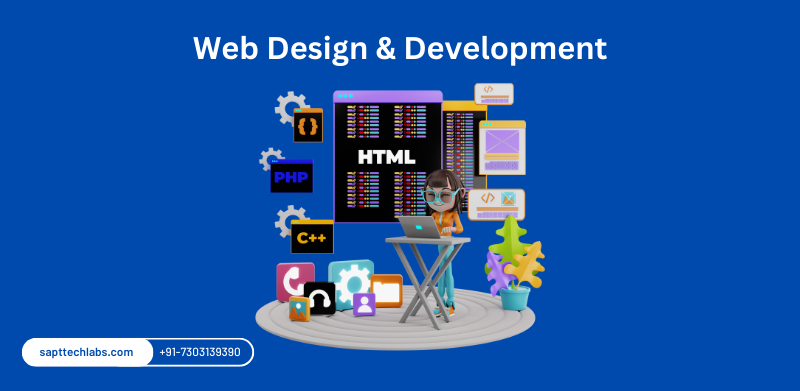In today’s digital era, web applications are instrumental in delivering dynamic and interactive experiences to users. However, two critical aspects greatly influence the success of web applications: search engine optimization (SEO) and accessibility. To ensure that web applications can be discovered by search engines and accessed by all users, the concept of server rendering has gained significant prominence. This article explores how server rendering enhances SEO and accessibility in web applications.
Understanding Server Rendering
Server rendering, also known as server-side rendering (SSR), involves generating HTML content on the server and sending it to the client’s browser. Unlike client-side rendering (CSR), which relies on JavaScript to render content, server rendering provides pre-rendered HTML to the client, reducing reliance on client-side JavaScript execution.
The Importance of SEO in Web Applications
Search engine optimization is crucial for web applications to achieve better visibility in search engine results pages (SERPs). By improving a web application’s SEO, businesses can attract more organic traffic, increase user engagement, and drive conversions. However, traditional CSR approaches often struggle with SEO as search engine bots may encounter difficulties crawling and indexing dynamically generated content.
Accessibility and Inclusive Design
Web accessibility ensures that people with disabilities can perceive, understand, navigate, and interact with web content. It encompasses various impairments, including visual, auditory, cognitive, and motor disabilities. Inclusive design principles promote the creation of web applications that can be used by individuals with diverse abilities, ensuring equal access and usability for everyone.
Benefits of Server Rendering for SEO
Improved Crawling and Indexing
Server rendering allows search engine bots to easily crawl and index web application content. By providing pre-rendered HTML, the server-rendered approach ensures that search engines can access the complete content of each page, including dynamic data and metadata.
Enhanced Page Load Speed
Server rendering significantly improves page load speed compared to CSR approaches, where JavaScript needs to be downloaded and executed before rendering the content. Faster page load speed positively impacts user experience and can contribute to better SEO rankings.
Richer Metadata
Server rendering enables developers to include relevant metadata, such as title tags, meta descriptions, and Open Graph tags, directly in the pre-rendered HTML. This ensures that search engines can accurately understand and present web application content in search results.
Benefits of Server Rendering for Accessibility
Improved Content Readability
Server rendering ensures that content is immediately visible to users, including those who rely on assistive technologies or have slow internet connections. It eliminates the need for additional JavaScript execution, resulting in better content readability and comprehension.
Better Screen Reader Support
Server-rendered HTML provides more semantic structure and accessibility features compared to dynamically rendered content. This helps screen readers accurately interpret and convey web application content to users with visual impairments.
Consistent User Experience
Server rendering ensures that all users, regardless of their device or browser capabilities, receive a consistent and accessible user experience. It mitigates the risk of functional gaps or visual discrepancies that may occur with client-side rendering.
Implementing Server Rendering Techniques
Various server rendering techniques can be employed to enhance SEO and accessibility in web applications:
Server-Side Rendering (SSR)
With SSR, the server generates the HTML content dynamically for each user request. This approach is ideal for applications that require real-time data or personalized content.
Pre-rendering
Pre-rendering involves generating static HTML files for each page during the build process. These files can be served directly to users, reducing the server load and improving performance.
Static Site Generation (SSG)
SSG entails pre-generating HTML files for all possible routes of a web application during the build process. This approach is suitable for content-heavy applications where data doesn’t change frequently.
Hybrid Approaches
Hybrid approaches combine SSR and SSG techniques to achieve the benefits of both. They allow dynamic content updates while leveraging the performance advantages of pre-rendering.
Considerations and Challenges
While server rendering offers significant advantages, there are considerations and challenges to be aware of:
Caching and Performance Optimization
Server rendering can introduce challenges related to caching and performance optimization, as each user request may require render on the server. Implementing caching mechanisms and optimizing server-side code are crucial to mitigate performance issues.
Dynamic and Interactive Elements
Server rendering is not always suitable for highly dynamic or interactive elements that heavily rely on client-side JavaScript. In such cases, a hybrid approach or client-side rendering may be more appropriate.
Complexity and Development Workflow
Implementing server-rendering techniques may introduce additional complexity to the development workflow, as it requires server-side render logic and build-time processes. Adequate planning and understanding of the chosen rendering approach are necessary.
Conclusion
Server rendering is a valuable technique for enhancing SEO and accessibility in web applications. By providing pre-rendered HTML content, server rendering improves crawling and indexing for search engines, enhances page load speed, and enables the inclusion of rich metadata. Additionally, it ensures better content readability, screen reader support, and consistent user experiences for individuals with disabilities. Understanding the different server-side rendering techniques and considering the associated challenges will empower developers to create web applications that are both search engine friendly and accessible to all users.



